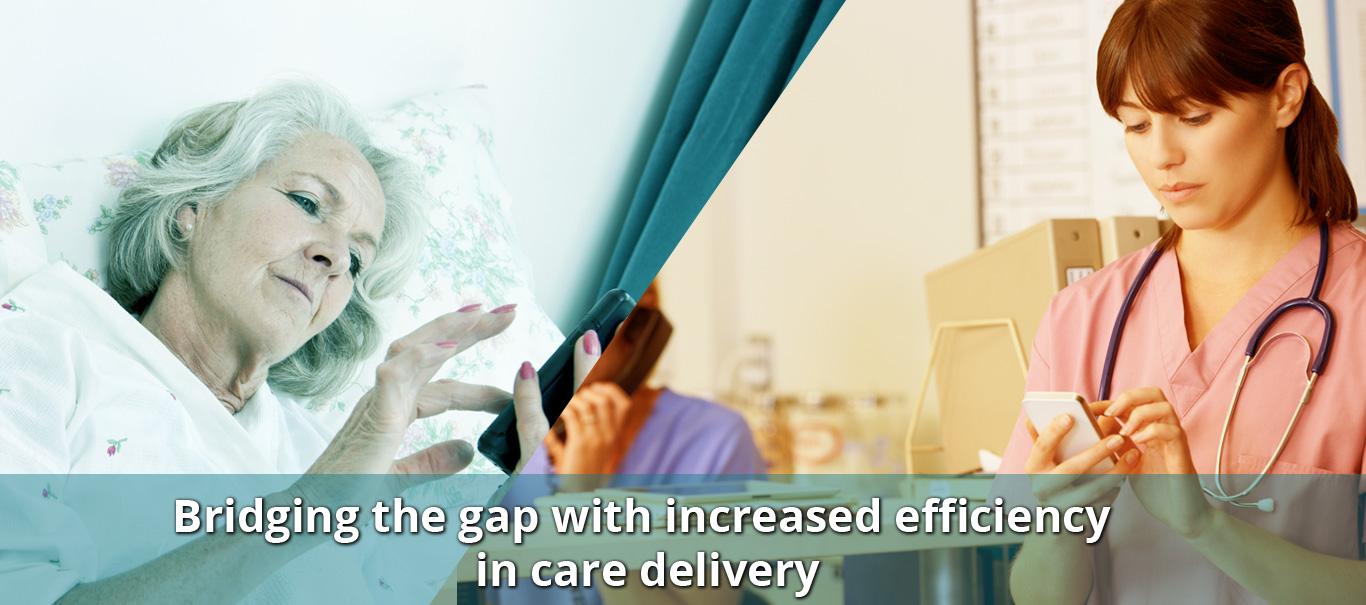Technology, today, is omnipresent. It is not just restricted to corporates, people in technology based businesses or healthcare services. Lay persons like you and me, across all ages have become extremely comfortable with using a mobile app or a web based software. We have been able to get several tasks such as buying things, organizing transportation, paying utility bills and arranging for services completed at the click of a button or with a simple phone call. So it is not uncommon for it gaining pace in the home healthcare sector. In fact, it has been highly useful in empowering patients and seniors by giving them control over their own healthcare at their fingertips.
Let’s take a look at some of the technologies that have encouraged home healthcare for seniors and patients.
i. Sensors and GPS
Sensors are tools that can be placed on the patient and in his surroundings. While it can be used to help in performing simple tasks such turning lights on or off when motion is detected, beeping an alarm to signal if a tap is left running too long, adjusting the room temperature to a comfortable degree etc., it can also be used to monitor the patient’s activities. In cases of elderly users where mobility is limited and mental deterioration is on a rise, an on-body sensor can help track user’s movements and signal the caregivers if anything is amiss. GPS based trackers are useful in helping locate seniors who may have lost their way, or are just contactable in case of an emergency. Moreover, some on-body trackers also help in automatically calling for assistance if the user has a fall, even if they are incapacitated.
ii. Remote monitoring tools and analytics
Patients and seniors that require palliative care can benefit most with remote monitoring tools. Healthcare providers offer their patients with a home healthcare app such as QLIFE from CareSynergist to reduce time consuming and expensive visits to the clinic. Patients can request a visit from a healthcare professional or inform them in case of an emergency, and a triage nurse in the backend will prioritize their request based on the patient history as well as the analysing the current situation. Patients can also record their vitals, activities, responsiveness and state of mind on the app. This record can help the healthcare provider analyse and predict the situation, thus averting any complication by intervening with preventive measures when necessary.
iii. Telehealth
Telehealth can be described as a ‘collection of means or methods, not a specific clinical service, to enhance care delivery and education’, by the federal network of telehealth resource centres. Telemedicine has been in use for over three decades, and is specific to the clinical service provided, but telehealth refers to the a broader domain including, but not restricted to, home healthcare, physiotherapy, medical counselling and dentistry, amongst a range of disciplines. Telehealth has paved way to remote medicine, where patients can video conference their doctors while going over their test results in real-time and getting a diagnosis.
iv. Mobile apps
Mobile apps have been a blessing for most of us. A couple of taps on a smartphone or tablet are all that it requires getting a job done. There are several apps that have made life easy for everyone, for example marketplace apps to buy things online and get them delivered to your home, apps to organize transportation whether its flight tickets, train tickets or even just booking a ride inside town, apps that help pay utility bills and taxes online and many many more. In the case of seniors and patients, specifically designed mobile apps can help them raise an alarm in case of an emergency and get prompt assistance, or even just remind them to eat their meals on time or take their medication.
v. Digital assistants
Digital assistants are sensor based applications that can assist seniors and patients by carrying out pre-set tasks or can take action in response to voice commands or hand gestures. An automated household is not a futuristic dream anymore. There are several companies offering complete digital assist solutions. Digital assistants can carry out several chores, right from making or answering phone calls, locking doors and gates to turning on the television in time for a favourite show and also calling for support in an emergency situation even if the user is debilitated.
vi. Social networking
Many seniors live by themselves. They often crave company and camaraderie, but are possibly not in the best shape to go out and mingle. In the past decade or so, social networking has taken precedence over actual face-to-face meeting and seniors have become the largest fragment of society that is active on social networking sites. It helps them keep in touch with long lost friends, relatives and acquaintances. In many instances, they have nurtured new-found friendships as well. The internet has succeeded in making the world a global village and it only takes a message to connect with a pal halfway across the world.
In conclusion, although there are still some gaps that need to be filled and loose ends that need to be tied , there is no doubt that technology has been largely responsible for patients and senior adults in receiving excellence in care and leading good quality lifestyles, in the comfort of their own homes. It is only a matter of time, as technology advances further, that home healthcare patient satisfaction will be higher than conservative methods of healthcare.












No Comments